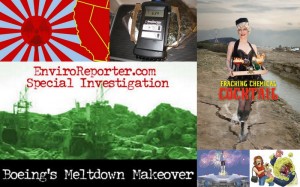 2012 was a hot year. Fukushima, Rocketdyne, Runkle Canyon and Farmer’s Field are just some of the stories that EnviroReporter.com covered. We not only dug deep to research and report the stories reviewed here, we connected the dots and provided evidence for readers to see for themselves.
2012 was a hot year. Fukushima, Rocketdyne, Runkle Canyon and Farmer’s Field are just some of the stories that EnviroReporter.com covered. We not only dug deep to research and report the stories reviewed here, we connected the dots and provided evidence for readers to see for themselves.
Radioactive Southern California air and Michigan rain, ionizing California food and astronomical radiation readings on jet aircraft made up just some of the over 2,560 radiation tests we’ve performed since four days after the Fukushima meltdowns began March 11, 2011. This testing continues 24-7 with our live feed of Radiation Station Santa Monica and eight other radiation stations in America and Australia.
Beginning the year, Seasons Readings documented hot Michigan rain registering in over 5.6 times background with another storm’s reading 6.5 times normal. We also detected radiation over five times what should be expected during flights across country, a threat we mitigated by wearing N-95 air filter masks.
In February’s Beta Watch we reported in depth on a new study that showed how the enormous amount of melted fuel at Fukushima is transforming itself into durable and fast-spreading radiation moving across the Pacific towards North America on the Kuroshio current. A U.C. Davis investigation looked at the impact of the millions of tons of fresh water and seawater poured onto the molten cores of the destroyed reactors. The conclusions were chilling. Nanoparticle buckyballs form as the water comes into contact with the melted fuel, which is intensely radiated, turning the water into peroxide.
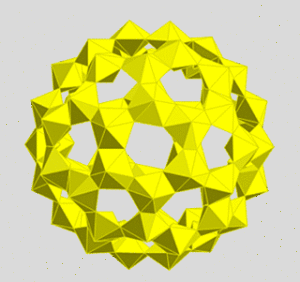 Though uranium isotopes are heavier than water, buckyballs are lighter because of their geodesic shape which is similar to a British Association football soccer ball. This structure makes radioactive uranium isotopes more mobile. Buckyballs can hold 60 uranyl ions in these spheres that exhibit high mobility in water. This is bad news because of its ability to spread Fukushima ocean contamination to Pacific Rim countries quickly. Equally troubling is that the study found that buckeyballs hadn’t decreased in ionization intensity after 294 days.
Though uranium isotopes are heavier than water, buckyballs are lighter because of their geodesic shape which is similar to a British Association football soccer ball. This structure makes radioactive uranium isotopes more mobile. Buckyballs can hold 60 uranyl ions in these spheres that exhibit high mobility in water. This is bad news because of its ability to spread Fukushima ocean contamination to Pacific Rim countries quickly. Equally troubling is that the study found that buckeyballs hadn’t decreased in ionization intensity after 294 days.
These hot nanoparticles, virtually indestructible, radiate and are a threat to anyone who inadvertently breathes them in where the buckyballs could induce lung cancer. Swallowing U60 buckyballs could also increase the chance of contracting cancer from its relentless radiation that is a so-called “bone seeker” that also targets the blood.
Not only did we explore this threat, we examined what those buckyballs and other Fukushima radionuclides would do once in the open sea. Radioactive sea spray has been shown to blow hundreds of kilometers inland in tests conducted in the United Kingdom by British and European researchers. As one who has ever smelled the salty ocean air miles from the ocean might expect, salt in sea spray can travel a significant distance. The same holds true for radioactive particles floating in the sea even if it they aren’t of the U60 buckyballs variety.
Sea spray-blown cesium 137 was found 200 kilometers from a discharge source in the New Hebrides islands in northern Scotland. The Cs-137 concentrations were so high that the bone-seeking radionuclide entered the food chain in island-grown produce. The vegetables were so hot that the dietary doses consumed by the islanders were the same and higher than workers’ dietary doses at nuclear power plants.
Studies found that the Irish Sea has a micro layer on top of it, perhaps only thousandths of a millimeter in thickness, that can get imbued with fine particulate material and its absorbed radiation. These concentrations of plutonium and americium are four to five times their concentrations in ambient seawater. Plutonium concentrates by 26,000 times in floating algal blooms at sea says a government report we cited and linked to in the article. Plutonium from Fukushima could also be hot glassing the surface of the Pacific in affected areas near Japan.
February also saw an investigation of what’s in pepper spray. Turns out that a lot of the really hot stuff is made with the rocket engine solvent trichloroethylene – TCE – as the majority of the ingredients. Extremely toxic at any level, TCE leaks from these cans and may endanger law enforcement. The investigation, which was published in LA Weekly, also found TCE-based pepper spray sold in major hardware stores in California without required Prop. 65 warning labels. TCE-based pepper spray packs a mean punch, one that can permanently affect vision.
In March we reported Radiation Readings Soar at Rocketdyne where cesium-137 clocked in at 9,328 times its background as shown in a July 2011 U.S. EPA “Radiological Background Study Report” for Rocketdyne soil. Shocking new radiation readings show a witches’ brew of deadly radionuclides on “The Hill.” Worse yet, the U.S. EPA pulled a bait and switch with the radiation background numbers threatening an agreement to clean the radioactive site back to its normal condition.
Both the federal EPA and state DTSC have ensured that these hugely inflated cleanup levels will leave the lab land nowhere near normal background radiation. Should SSFL remain essentially unremediated – as the government, Boeing, and its astroturfing allies are advocating – future open space or park users will be playing a game of Rocketdyne roulette depending on where they decide to picnic or hike. There will be no signs saying “Cesium-137 Hazard – KEEP OUT” because, as was exposed by EnviroReporter.com later in 2012, Boeing already thinks the place perfectly fit for public use.
Highest Radiation in L.A. Air Yet brought news no other Southern California news organization had the capacity or willingness to report. “The March 6 test of the combined dust came in at a sizzling 668% of background or 6.68 times normal,” the post reads. “Since the last testing period, the radiation detected has risen another 130% indicating a continued upward trend.”
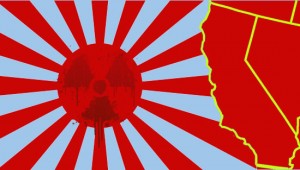 Rad News Digest, created and updated by Team EnviroReporter, began with news summaries and links back to the day that the Fukushima triple meltdowns began. Team EnviroReporter has documented thousands of the most important Fukushima and radiation-related news stories published to date since March 11, 2011. It takes dedication and diligence to pick the best articles and succinctly summarize their importance, and we are very grateful for Team EnviroReporter’s important contribution to our ongoing Fukushima coverage.
Rad News Digest, created and updated by Team EnviroReporter, began with news summaries and links back to the day that the Fukushima triple meltdowns began. Team EnviroReporter has documented thousands of the most important Fukushima and radiation-related news stories published to date since March 11, 2011. It takes dedication and diligence to pick the best articles and succinctly summarize their importance, and we are very grateful for Team EnviroReporter’s important contribution to our ongoing Fukushima coverage.
The contamination that EnviroReporter.com investigates knows no boundaries except those of ignorance of people who place power and money over the welfare of people and the planet. The extent of the problems presented by the triple meltdowns in Japan is explored at our Fukushima Investigation page. EnviroReporter.com‘s radiation monitoring also grew in 2012 with the addition of Radiation Station Sunshine Coast Australia and Radiation Station Simi Valley California in addition to our other Radiation Stations. These two stations are particularly active, involved and are superb at their mission.
The same day Team EnviroReporter’s Rad News Digest debuted was also the publication date of The Endless Bummer. The feature explores the potential impact of Fukushima radiation contamination for Southern California with the threat of uranium-filled “buckyballs” irradiating West Coast waters as the ocean of Fukushima debris comes closer.
On March 21, Rocketdyne Still Hot was published in support of the article by the same name in the Ventura County Reporter. The article and supporting material expanded upon our online coverage and exposed just how the government pulled a bait and switch on an unsuspecting and trusting public, gutting the Rocketdyne cleanup’s goal of remediating the polluted place back to normal levels of toxins in the soil and groundwater. While some of the science can be complicated, we made the trickery understandable:
“The EPA’s Radiological Trigger levels (RTLs), which are supposed to mirror the extensively tested and reported-on backgrounds of the numerous radionuclides at the site, were many times over the background threshold values (BTVs). So instead of cleaning up to background, much more radiation would be left in the ground, saving the government and lab owner Boeing millions in cleanup.
It is a classic bait and switch. And it almost worked.
It went unnoticed until this reporter spotted the huge discrepancy between the RTLs and BTVs because they were so obvious to anyone with any SSFL knowledge. Yet nobody else had noticed except, obviously, the EPA that created the PowerPoint with the bait-and-switched numbers in the first place.
One soil sample was laced with cesium-137 clocking in at 9,328 times its background, as shown in a July 2011 U.S. EPA Radiological Background Study Report for Rocketdyne in Table 8.4. Yet the EPA’s RTL in the PowerPoint is more than 25 times the same agency’s 2011 background study for subsurface samples of Cs-137, a cancer-causing radionuclide.
On a scenic bluff overlooking Simi Valley next to where the SRE once stood, leukemia-causing strontium-90 was assigned an RTL 6.47 times Sr-90’s BTV and tested at 284 times background.
Strontium-90’s RTL was more than 37 times its BTV in another sample. The hot dirt came in at more than 71 times background radiation, dug out a couple of feet below the surface. This suggests that even after two “cleanups” the area may still be facing a huge excavation job.
Fuzzy math also made its mark on the RTLs of tritium, carbon-14, cobalt-60, neptunium-239 and europa-152. All were detected by EPA at several multiples of their actual backgrounds.
Nothing could be more worrisome than the manipulation of the levels determined for plutonium-239/240. The isotope is one of the most potent radioactive killers on the planet, yet the EPA’s radiological trigger level was nearly 20 times its background. Exposure to even minute amounts of Pu-239/240 can give a person lung cancer.”
In April, we reported L.A. Rain Radiation Over Five Times Normal. An imperfect storm had swept into Southern California on, perhaps appropriately enough, April Fools weekend creating the conditions that tested EnviroReporter.com‘s scientific hypothesis that radioactive “buckyballs” and other fission radionuclides from the triple Fukushima Japan meltdowns were already impacting the region.
Sure enough, a rain composed primarily of sea mist formed over a choppy ocean with high winds tested higher than any other Los Angeles Basin rain since Radiation Station Santa Monica began fallout radiation tests March 15, 2011. The rain, not impacted by so-called “natural” radon progeny, came in at a whopping 506% above normal, more than high enough to qualify as a hazardous material situation for the California Highway Patrol.
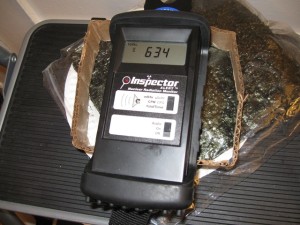 This was the hottest L.A. rain detected with our Inspector Alert nuclear radiation monitor in the over 1,500 radiation tests taken up to that time. As of December 22, 2012, Radiation Station Santa Monica had conducted over 2,554 tests and had been seen on EnviroReporter.com‘s Ustream channel by 1,499,386 viewers seeing testing 24/7 for over 630 consecutive days.
This was the hottest L.A. rain detected with our Inspector Alert nuclear radiation monitor in the over 1,500 radiation tests taken up to that time. As of December 22, 2012, Radiation Station Santa Monica had conducted over 2,554 tests and had been seen on EnviroReporter.com‘s Ustream channel by 1,499,386 viewers seeing testing 24/7 for over 630 consecutive days.
Food and drink testing have been an important part of EnviroReporter.com‘s ongoing regime since the Fukushima disasters began. We started Eat Me in order to provide information on potential radioactive threats to the products we consume including exacting tests on foods.
In Japanese Seaweed Radiation Doubles April 20, EnviroReporter.com journeyed back to the same Japanese store in Los Angeles to purchase the same brand and make of Nori seaweed we had bought in August 2011. The green sheets of seaweed, prized for its nutty, crispy flavor by hipsters and locals alike, come in at double background radiation, with a substantial part of that ionization emanating from alpha radiation which is 60 to 1,000 times more dangerous than beta and gamma radiation if ingested or inhaled.
The eight-month old Nori seaweed bought last year still radiated far above background but lost some of its punch strongly suggesting the presence of medium and long-lived radionuclides like cesium-137 and the lethal brew captured in uranium-60 “buckyballs.” Worse still was the fact that the gelling substances in seaweed, 90% of which is grown in the Far East, are used in toothpaste, milk shakes, beer, desserts and all manner of food and drink products that are made with alginate and carrageenan.
Hot seaweed like this is sold in 49 Japanese and Japanese-American stores in Southern California as well as over 900 restaurants without a peep from mainstream and alternative media. Michael Collins did, however, test the hot seaweed on the popular television program Attack of the Show! which was seen by seen by millions according to the producers of the show.
L.A. Air Even Hotter with Radiation also was published April 20 topping EnviroReporter.com‘s last radiation readings of HEPA filter dust in the western Los Angeles Basin. A 40-day accumulation of dust and debris by three HEPA filter machines at Radiation Station Santa Monica yielded the highest air rad readings we had yet taken: 7.46 times normal.
In May, 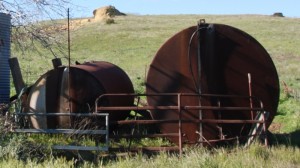 Runkle Roulette brought new developments in the long battle over development in Runkle Canyon hard on the border of the nuclear part of the Santa Susana Field Laboratory. The occasion was a city of Simi Valley Planning Commission meeting to rule on whether to allow KB Homes a five-year extention to build since it had been stymied by resistance to the venture by the Simi Valley-based Radiation Rangers who have been a thorn in the side of Runkle Canyon developers since forming in 2006.
Runkle Roulette brought new developments in the long battle over development in Runkle Canyon hard on the border of the nuclear part of the Santa Susana Field Laboratory. The occasion was a city of Simi Valley Planning Commission meeting to rule on whether to allow KB Homes a five-year extention to build since it had been stymied by resistance to the venture by the Simi Valley-based Radiation Rangers who have been a thorn in the side of Runkle Canyon developers since forming in 2006.
EPA found huge strontium-90 hits uphill and next to Runkle Canyon boundary. (Later EPA radiation survey maps in the year would reveal that extremely hot areas of gamma radiation in a large area come right up to Runkle Canyon’s fenceline where the testing stopped.)
The article showed how DTSC signed off on KB Home’s minimal testing of the site for radiation. It included Radiation Ranger “Wild Bill” Bowling’s discovery of two underground flammable liquid tanks tipped to pour liquids into a Runkle Canyon well that tested positive for trichloroethylene. Compounding the contamination questions was the long-awaited EPA SSFL Area IV radiation study that found alpha radiation in an offsite well two miles from Rocketdyne. The hot water was detected on American Jewish University’s Brandeis-Bardin campus below the lab with over eight times alpha radiation’s “Maximum Contaminant Level.”
Runkle Canyon Tanks reported on the first time in six years of residents battling KB Homes that company representatives and the community faced off at a Simi Valley Planning Commission meeting. The developer’s representative and his attorney, perhaps flustered by the vocal opposition to the project, embarked on an odyssey of factual inaccuracies about the controversial building scheme. (2013 coverage will examine KB Home’s legal debacle before the Simi Valley City Council last summer and the challenges it faces before the tractors possibly start rolling this Spring.)
A Radioactive Nightmare hit the stands on June 7. The Ventura County Reporter took the unprecedented step of being the first print newspaper in the United States to publish an in-depth expose showing the extent of Fukushima meltdowns-related radiation contamination in the Pacific Ocean, West Coast and the United States. Wide-ranging in scope, this cover story tied together the grim scenario of how the Pacific is being polluted, how that contamination is getting to North America, and what the a sea full of radioactive “buckyballs” might mean for people and animals living along the coast and up to 200 miles inland.
On July 11, the Pasadena Weekly reprinted the story and called it “Radioactive Nightmare” which included an unfortunate art piece choice that suggested that the art director didn’t understand the story. It showed a nuclear bomb going off as the source of the radiation. This was the second print article in a row with art that was factually inaccurate: the VC Reporter cover “A Radioactive Nightmare” showed a map of the Pacific implying that’s how Fukushima radiation would flow in the ocean. It is wrong, however, as the image is of seismic shock from the Fukushima earthquake. This is unfortunate, but the larger picture is that these excellent papers tackle and explore controversial but all too real information that mainstream media either can’t or won’t cover.
The Unforgettable Fire, June 19, documented a threat that continues to grow as the blow-apart Fukushima reactor complex teeters from earthquakes and continued structural degradation and subsidence. An unforgettable, and inextinguishable, fire will break out if Fukushima’s Reactor 4 building collapses taking its spent fuel pond with it.
The uncontrollable blaze would lead to full meltdowns on Fukushima’s other three reactors in addition to the trio already destroyed, as well as alighting the common spent fuel pond with over 6,000 incredibly radioactive spent rods. The disaster, ignored by the American and Canadian governments as Japan blunders along, would make Tokyo uninhabitable and ruin Japan and lands beyond possibly including our own depending on fallout deposition in rain.
Reporting this sometimes grim news requires a little levity to keep this online news organization operating smoothly and at full capacity. That levity came in 2012 in a the form of EnviroReporter.com‘s editor and webmaster Denise Anne Duffield’s turn as a Toxie at the Toxies for Bad Actor Chemicals.
The Third Annual Toxies took place June 24 at the Silent Movie Theatre in Los Angeles with some new faces in the toxic crowd including a fetching Fracking Chemical Cocktail. A Fracking Night to Remember captures the excitement of the event.
Collins interviewed Fracking Chemical Cocktail and Trichloroethylene for the July 26 story Fracked. More brawl than interview, TCE clobbered Collins who jousts with the volatile organic compound. The journalist then truly meets his match in Fracking Chemical Cocktail where the chemistry sparks when the subject turns to drilling and fracking. Expect to see more of “Frackie” in 2013 as she promotes fracking across the country with Collins hot on her tail.
Frackie’s star turn came on the same day as the 54th Annual Southern California Journalism Awards Gala. EnviroReporter.com won First Place for Website – News Organization – Exclusive to the Internet. The judges comments: “A wealth of resources when it comes to our environment. From investigations to videos to exclusives, EnviroReporter.com is one interactive site that should be clicked on everyday.”
Runkle Canyon Fraud and Folly came out July 16 and reported on KB Homes rolling out the big guns at a Simi Valley Planning Commission meeting deciding whether the developer would get a five-year extension on its permit to build in Runkle Canyon. An extension, however, was exactly what the activists need because it won’t force KB Home’s hand with two years left on its present permit. Opponents of the project pointed out that the canyon is protected by the Clean Water Act which KB Homes has ignored.
No Place to Hide – Fukushima Fallout Findings Widespread came out August 28. The article showed that high alpha and beta air readings were the least of Southern California’s worries with new evidence of Fukushima meltdowns contamination in California oranges, dried plums, almonds and pistachios.
Florida grapefruits and Missouri beef are also shown to be impacted by Fuku-goo. Radiation-induced mutations in Japanese insects cause concern over mutated Santa Barbara sunflowers as radiation in jet plane cabins goes up probably linked to airborne Fukushima meltdown emissions.
This powerful piece covered a wide range of topics that have been ignored by the flagging alternative media as well as mainstream legacy media. The technological capabilities of New Media, as demonstrated robustly on EnviroReporter.com, have proven to be far more effective, informative and authoritative on the Fukushima crisis than traditional news outlets.

Activists were concerned over health effects while Los Angeles Times took project boosterism to new and unseemly lows. The project’s Environmental Impact Report is figuratively obscured by toxic smoke which may open up city and developer to future lawsuits from fans, players, employees and people living around Farmers Field and possibly impacted by perchlorate and heavy metals in the fireworks. A week later, we published AEG Punts Perchlorate Football at Farmers Field which further documented the ongoing story.
The October 2 publication of Radioactive Tritium Found in Water in Vancouver B.C. Canada was a first on EnviroReporter.com. Team EnviroReporter wrote of tritium discoveries in Vancouver, B.C. Canada drinking water reservoirs. The results were dismaying – the Capilano Reservoir was 144% above background levels and the Seymour Reservoir was 185% higher.
Team EnviroReporter also revamped one of the cornerstones of this website: Rad News Digest in its second addition as Rad News Digest II. The thousands of critical articles, photos and videos that form Rad News Digest make it the go-to place for all Fukushima meltdowns and nuclear issues-related information. This atomic library of information is one of the pillars of EnviroReporter.com.
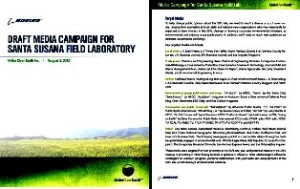 December 10 was a milestone day in the sixth year of this website’s existence. That was the day we published Boeing’s Meltdown Makeover. Thousands of pages of documents, reports, interviews, e-mails, photographs and surveillance video of demolition at the site revealed Boeing’s vast campaign to subvert any meaningful cleanup of the Santa Susana Field Laboratory.
December 10 was a milestone day in the sixth year of this website’s existence. That was the day we published Boeing’s Meltdown Makeover. Thousands of pages of documents, reports, interviews, e-mails, photographs and surveillance video of demolition at the site revealed Boeing’s vast campaign to subvert any meaningful cleanup of the Santa Susana Field Laboratory.
Part one of the series, Greenwashing Rocketdyne, details Boeing’s secret media campaign to convince the press and public that polluted Rocketdyne is clean enough right now for a park. Boeing hired former LA Times writer Gary Polakovic to sell the makeover of SSFL as “a site with a sordid past to one with potential.” Related material includes the secret plan itself: “Draft Media Campaign for the Santa Susana Field Laboratory by Make Over Earth Inc.”
Part Two came out December 11 and was entitled Dirty Deeds. This article detailed how Rocketdyne’s litany of environmental accidents, spills, meltdowns and disasters had been no impediment to lab owner Boeing’s campaign of self-congratulations over its “open space vision.” Boeing threw a congratulatory dinner in Pasadena recently for itself to applaud its illusory environmental laurels at SSFL. Those include the use of unskilled youth to do jobs at the lab now where professionals before had worked wearing haz mat outfits.
EnviroReporter.com obtained exclusive footage of sloppy Boeing demolition work sending clouds of contaminated dust into the San Fernando Valley.
Radiological and chemical contamination have real and sometimes deadly consequences, as demonstrated by studies on workers show and tragic stories of sick former employees and community members.
But Boeing’s polluter allies don’t seem to agree.
The Wildlife Habitat Council, a front group for DuPont, Exxon Mobil, Monsanto and other polluters, awarded Boeing for “transforming” Rocketdyne into “open space benefiting the community” from an industry group parading as an environmental organization. This dubious award appears a little premature when actually viewing the Rocketdyne demolition videos that document the shoddy remediation work on The Hill done by the company that claims the place is already clean enough for a park.
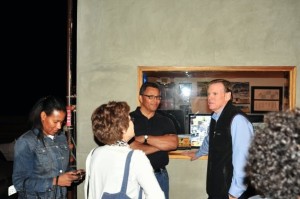
E-mails and interviews detail how Boeing and DTSC put all their support in the CAG petitioner, Christina Walsh, who has threatened, harassed and libeled community members, elected officials and the media. Another astroturf target is open-space advocate John Luker, friend to Boeing meltdown makeover PR flack Gary Polakovic, who has mounted his own campaign to contend, erroneously, that cleaning up SSFL will harm its scenic beauty. Related material from this part of the series include A Trail of Flames and A Keen Observer.
The fourth piece of the series, Toxic Department, exposes how Boeing’s huge lobbying war chest, one of the five highest corporate lobbyist coffers in the country, has turned Cal-EPA’s DTSC into a “captured agency” according to Rocketdyne activists. Community members say DTSC appeared to fold in a lawsuit brought by Boeing over the SSFL cleanup, not challenging false statements in litigation.
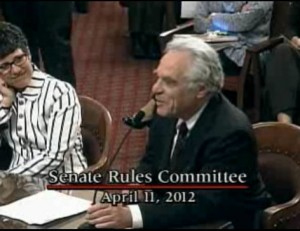
Part five, Up a River Without a Cleanup, reported that the long-awaited EPA study found high radiation in SSFL Area IV with some radionuclides over a thousand times background. EPA and DTSC ditches the agreement to cleanup SSFL to background levels of contamination, infuriating activists as government blew $41.5 million in stimulus money in the process. The maneuver prompts calls for an investigation of the agency’s misappropriation of millions that were supposed to be the guide for the DTSC cleanup to background. With no real cleanup in sight, Rocketdyne contamination will continue to gush into the L.A. River during rain which muddies the waters of a $2 billion renovation of the river as the centerpiece to the City of Los Angeles’ 50-year master plan.
A gallery of the EPA radiation meeting is illuminating as the many of the people in this series were there. The EPA Radiological Survey of Area IV and the Northern Buffer Zone has EnviroReporter.com-highlighted EPA maps of the radiological contamination in Area IV extensive hot zones.
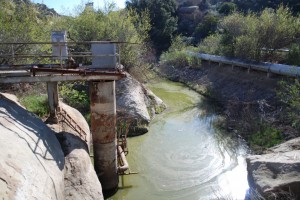
We ended the year with the results of a Rad State Road Trip in which EnviroReporter.com tested rain, snow, air, food and drink across thirteen states and came up with some surprising results.
In 2013, EnviroReporter.com will expand its investigations into the major stories of 2012 and new ones to come. If the new year is anything like 2012, there will be plenty of hot news, real hot news.












Michael and Denise…..This summary of 2012 is absolutely overwhelming! Even one article alone is a knockout, but, putting them all together like this more than doubles the scary impact!
When it comes to Fukushima, you have done an incredibly huge amount of investigation and writing on a subject that our major newspapers seemingly do not want to to touch with even a 50 foot pole. Just knowing that Fukushima reactor#4 could cause a global disaster, and that some of our food items are radioactively contaminated has been reported only by you and Denise….and no other major newspaper, to say nothing of our Governmental agencies who are supposed to be protecting all of us in the USA.
And then there is the comedy going on up at the SSFL…our new and wonderful park. I, personally would never have understood the bait and switch positioning of the RTLS’s and the BTV’s without you. They don’t tell us this kind of thing at the technical meetings.
THANK YOU!
This reminds me of the debates I get into with nuke power advocates. I like to argue that if your efforts include a scenario that kills all life on the planet … you probably need different plans.
Let’s not mince words. We’ve all got thyroid cancer in our futures, courtesy of Fukushima. Maybe we should try using less energy rather than more pollution.
I agree with Bonnie. Great summary.
Q: How long will it be until the final summary reads…?
“The radioactive contamination from Fukushima has stopped.”
A: Beyond our lifetime and for generations to come.
I am very grateful to know Michael and Denise and thankful for all the excellent writing and details presented for our community on these critical topics. I love this comprehensive summary with all the links included.
@David – A huge catastrophe has indeed occurred at Fukushima and has not been brought under control. But it is not too late to close the barn door on reactor #4 – it is still standing and ready to topple (see Michael’s The Unforgettable Fire). Let’s hope TEPCO removes the fuel rods from the spent fuel pool at reactor #4 before it’s too late and the entire northern hemisphere is contaminated beyond habitability. Sadly, we can only “hope” this happens before it’s too late – the Japanese government is not allowing international assistance in that effort, the United Nations is not doing anything, the Canadian government has ignored the people’s petition urging them to get involved and the U.S. is promoting the use of nuclear power in Japan. But while we are hoping, we can, as Arnie Gunderson says, “watch it like a hawk” and decide where we will evacuate to if the absolute worst happens.
It is also not too late to close the barn door on all the 104 reactors in the U.S. that are still standing – and leaking and aging. 23 of them are GE Boiling Water Reactors that failed three times at Fukushima.
For 2013 I encourage everybody to get involved in shutting down your local reactor and stopping the insanity of the nuclear age. Join Beyond Nuclear’s campaign to Freeze our Fukushima’s: ” a national campaign created by Beyond Nuclear to permanently suspend the operations of the most dangerous class of reactors operating in the United States today; the 23 General Electric Mark I Boiling Water Reactors, the same flawed design as those that melted down at Fukushima-Daiichi in Japan.” http://www.beyondnuclear.org/freeze-our-fukushimas/ . Or find a local organization that is working to shut down the nuclear power plant closest to you. Always come back to Enviroreporter for the latest RAD NEWS. Get active and put as much time into it as you possibly can – before it really is too late to shut the barn door.
Great work, intrepid enviroreporters. Tragically, Fukushima is indeed a catastrophe for the whole world, and will be for a very long time, and there’s nothing we can do about it – just like GMOs – it’s too late to shut the stable door, the horse has already bolted. The human race and planet Earth were doing fine ecologically until the last century saw war and corporate fascism become all the rage. Then what a bunch of silly monkeys we seem to have suddenly evolved into – or been conned into…
@ Michael and Denise Thanks for the 2012 in Review. What an amazing amount of energy you both have so selflessly devoted to keeping a million and a half people informed. Your work has educated many about the radioactive contamination in their tuna, sushi, airplane travel and hiking adventures in LA’s Simi Valley. Inhaling that fine ocean mist now has new meaning for me as will the lovely smell of perchlorate at each fireworks demonstration. Denise, your creativity and costuming is unsurpassed. What you have both done this year is nothing short of spectacular reporting. On top of this you provide a forum for us in Radiation Conversation where we can share our knowledge and ideas. I am gratefully pressing the DONATE BUTTON and encourage all your readers to do the same and to contribute to this extremely valuable work. Wishing you both the very best in 2013!